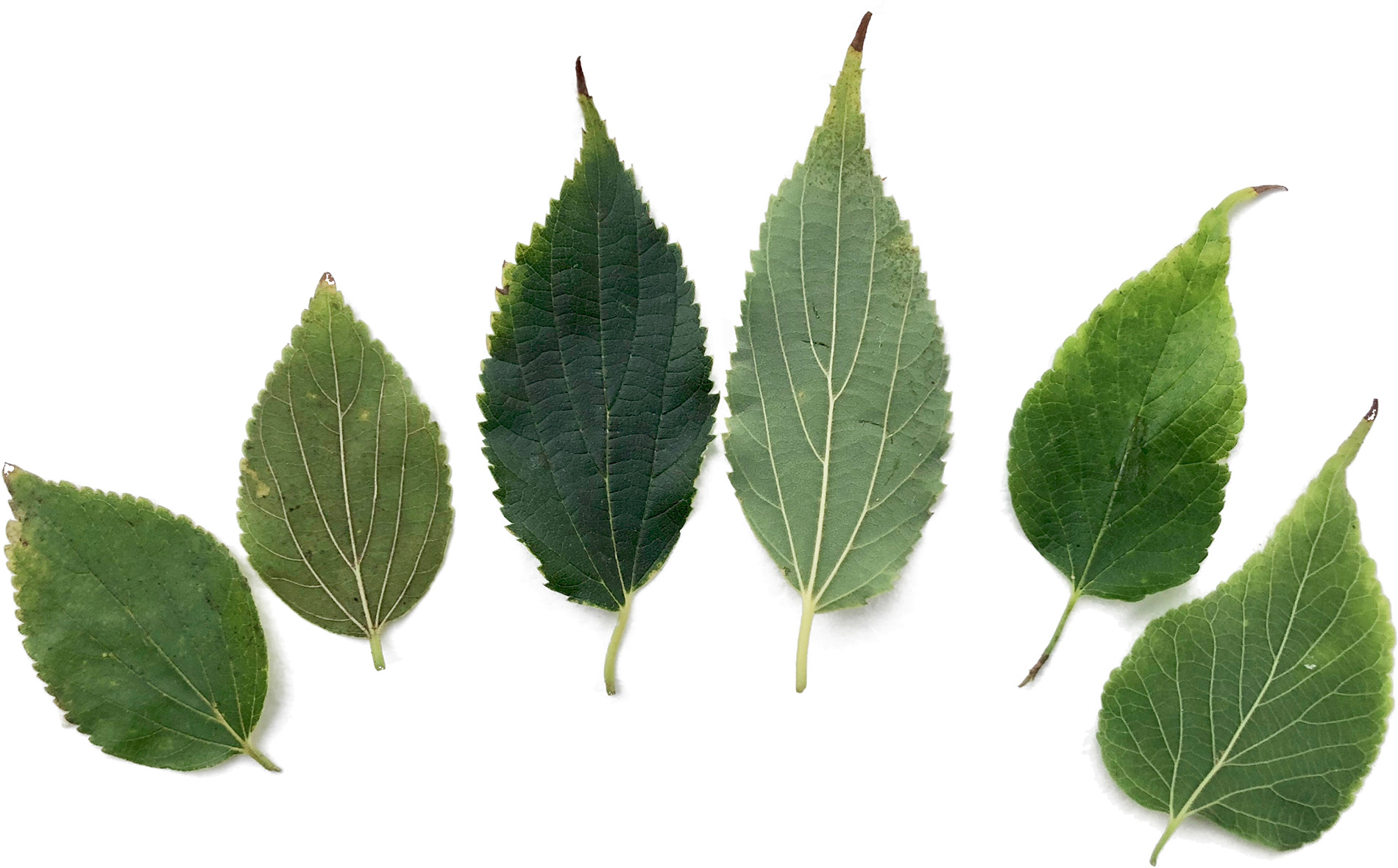Celtis australis
 European hackberry
European hackberry

The leaves have sharp saw-teeth, are rough on top, and furry underneath. The ¼-inch edible fruit are dark purple and hang on stalks over an inch long.
A few specimens can be seen on Pine Hill Road at the Bowdoin Street end and compared to C. occidentalis up the street. A row is on the east side of the north wing of Toyon Hall; a few are at the south wing, near Branner Hall. A large specimen planted in 1890 was near the west corner at Quarry Road and Campus Drive West, the location of the gardener’s shed at the time the Inner Quad was being leveled and planted. It may be the same tree that now finds itself next to the utility structures near an automatic gate in the parking lot west of the intersection.
About this Entry: The main text of this entry is from the book Trees of Stanford and Environs, by Ronald Bracewell, published 2005. Family updated from Ulmaceae to Cannabaceae; all locations verified (Sep 2019, SP). Toyon locations added (Aug 2024, SP).




